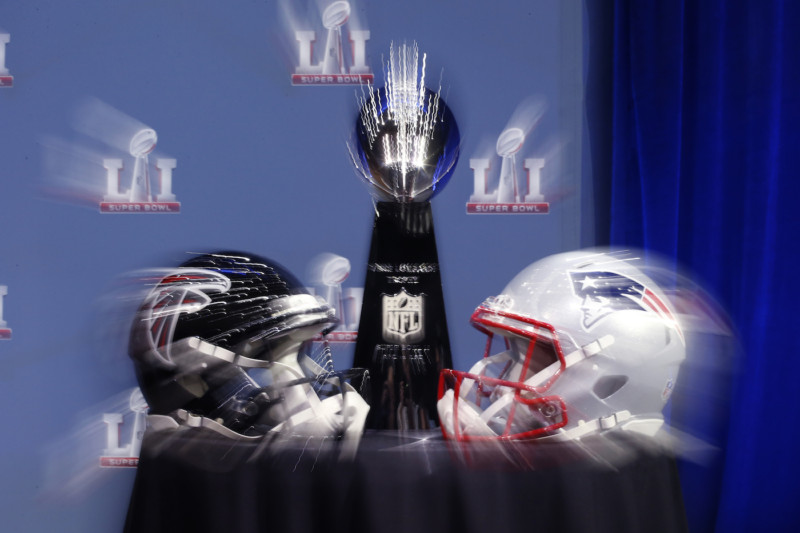
By Jason Kornwitz
News at Northeastern

We asked Bruce Clark, associate professor in the D’Amore-McKim School of Business (at Nothestern University) who studies marketing strategy and managerial decision-making, to weigh in on the pros and cons of shelling out beaucoup bucks for a 30-second spot during one of the year’s most-watched TV events.

QUESTION: The average cost of a 30-second Super Bowl ad reached $5 million this year, up from $2.4 million in 2007. Simply put, are Super Bowl ads worth it? Do they boost sales and brand recognition sufficiently high enough to justify the steep price?
A 2014 study by the research firm Communicus estimated that only 20 percent of Super Bowl ads moved either purchase or purchase intent. This is actually worse than non-Super Bowl ads the firm studied, where the figure was 40 percent. If sales are the goal, the general answer has to be “no.”
That said, there is that 20 percent. A study out of Stanford University estimated that Budweiser earned a return on investment of 172 percent on its Super Bowl advertising over a six-year period, but attributed it partly to the brand’s exclusive rights as the only Super Bowl beer advertiser. Lesser-known internet brands such as Wix, GoDaddy, and E-Trade clearly benefited from their early Super Bowl advertising.
At a broader level, there are other reasons one might run an ad. Super Bowl ads probably work at an awareness level. It seems likely, for example, that products with a mass-market target, such as upcoming movies, appear to do well in this regard. In contrast, firms that sell to a very specialized audience probably generate lots of “wasted coverage”—that is, exposure to people who will never be customers. And all of this says nothing about what spending $5 million on something else (e.g., search ads, mobile ads) would have done.
QUESTION: Snickers plans to air the first-ever live Super Bowl ad, which will star Adam Driver from the HBO show Girls. And Hyundai plans to film its Super Bowl ad during the game itself and then run the spot during the first post-game commercial break. Given that less than 1 percent of Super Bowl viewers watch the ads with the goal of consuming any of the goods and services on display, what are Snickers, Hyundai, and other companies with novel Super Bowl ad strategies trying to accomplish?
Novelty is about breaking through the clutter. There are many Super Bowl ads, so how do you make yours stand out? Arguably the best ad of the 2013 Super Bowl wasn’t an ad at all: Oreo earned tens of thousands of social media responses to its timely tweet “you can still dunk in the dark” when the lights went out at the Louisiana Superdome. The sheer novelty of that tweet made it incredibly powerful and memorable.
QUESTION: Buick debuted its first Super Bowl ad during last year’s game, a 30-second spot featuring New York Giants wide receiver Odell Beckham Jr. and model Emily Ratajkowski. This year, the upscale auto company will be releasing its Super Bowl ad before the big game and spending twice as much money as it did last year to promote the spot on social media platforms like Twitter and Facebook. In your view, how has technology changed Super Bowl advertising?
It’s hard to over-emphasize how much social media has changed the Super Bowl advertising conversation. One study estimated that the 2015 Super Bowl generated some 25 million tweets. Pre-game and post-game attention has become an important metric in figuring out whether an ad “worked.” One rule of thumb suggests a firm should spend an incremental 25 percent of its Super Bowl ad budget to promote the ad. Social media engagement is free publicity for the firm and may increase customer engagement for a brand even if the brand is well known. Buick’s ad last year did not do especially well. This year the car company is pulling out the stops with the hope that the new ad will do better. Pre-game promotion may prime consumers to be on the lookout for the ad and thus may lead to higher recall after the ad is seen.
QUESTION: What’s your all-time favorite Super Bowl ad?
I’ll give you two. One is Nike Heritage from the 1991 Super Bowl, 90 seconds of pure poetry as a runner moves through a darkened city while images of great Nike sports moments are projected on the buildings around him. The other is EDS Herding Cats from the 2000 Super Bowl, where, unusually, using cute animals is integral to the ad message, as the metaphor of managing complex IT projects as “herding cats” is brought to hilarious life.
(Published with permission from News at Northeastern.)













